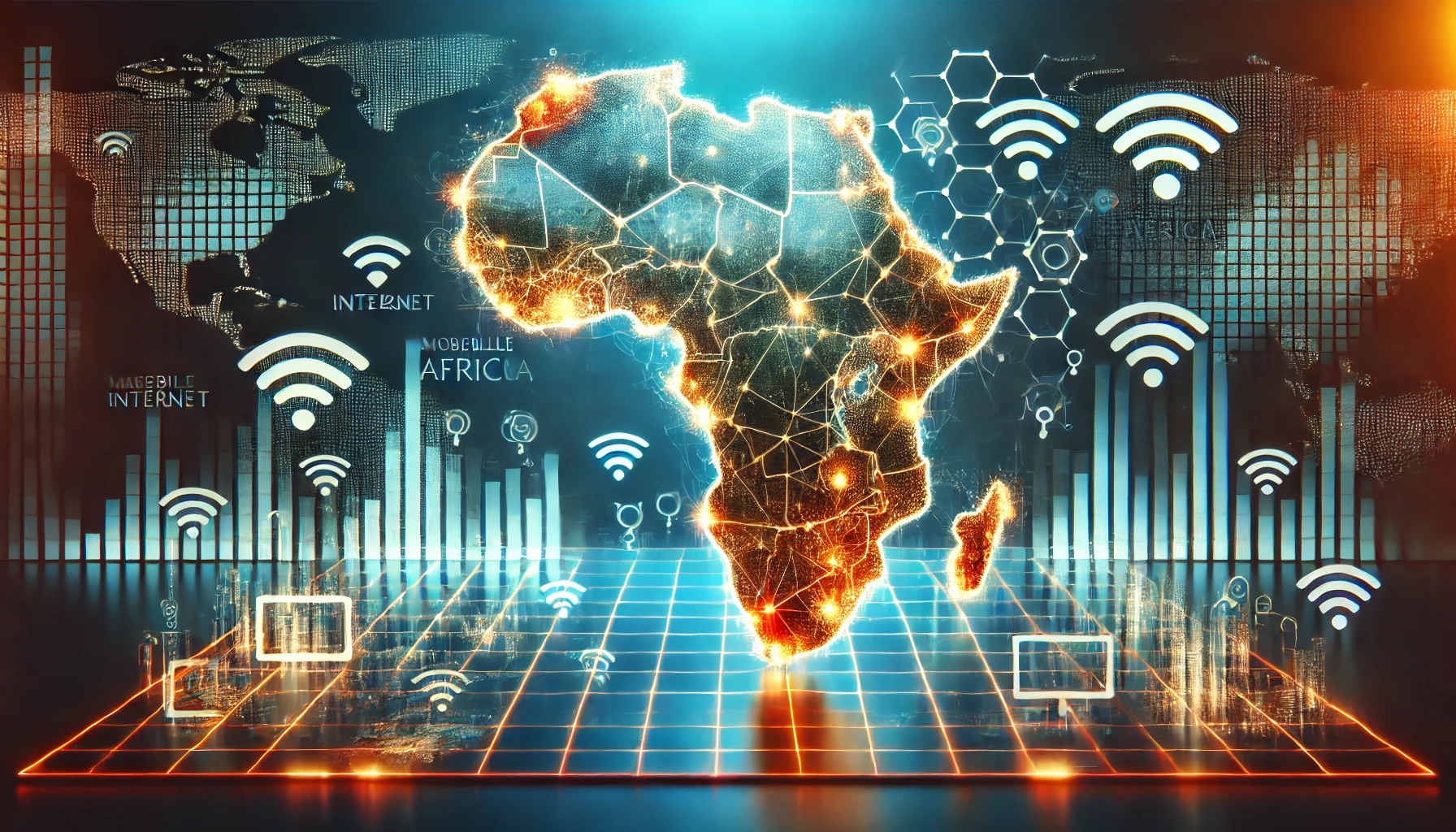🍔Quick Bite: Africa’s mobile internet connectivity has grown significantly, with 87% of sub-Saharan Africa now covered by mobile broadband. However, over half the population remains offline due to challenges like affordability and digital literacy.
🧠 The Breakdown
At the end of 2023, 4.6 billion people worldwide were using mobile internet. That’s 57% of the global population, up by 160 million from the previous year, according to the latest State of Mobile Internet Connectivity 2024 report by GSMA. On the surface, this is a victory—a sign of our hyperconnected era. Yet, beneath the headlines lies a sobering reality, particularly for Africa. While the continent has made strides in mobile connectivity, the road to universal internet access is still riddled with challenges that threaten to leave millions behind.
Africa’s dual reality
Globally, only 4% of the population lives in areas without mobile broadband coverage. Africa, often seen as the last frontier for digital expansion, has witnessed tremendous progress in reducing its coverage gap. By the end of 2023, 87% of sub-Saharan Africa’s population lived within reach of a mobile broadband network, a significant leap from previous years.
Yet, having the infrastructure is not the same as using it. The continent suffers from a staggering usage gap—the difference between those covered by mobile broadband and those who actually use it. In Eastern Africa, 68% of people within coverage zones remain offline. Across sub-Saharan Africa, more than half of adults are still disconnected.
This paradox is more evident in Central Africa, where 34% of the population lacks mobile broadband coverage, the largest gap on the continent. Even in regions with better coverage, like Southern and Western Africa, usage lags far behind due to barriers like affordability and digital literacy.
Africa in the global context
Africa’s challenges aren’t unique, but they’re more pronounced. In South Asia, for example, affordability remains a key obstacle, but adoption is catching up thanks to rapid urbanisation and government initiatives. Globally, 80% of mobile internet users now access the web through 4G or 5G smartphones.
This number is significantly lower in Africa. While smartphone adoption is growing in urban areas, rural communities still rely heavily on feature phones and 2G networks. This is critical because many telecom operators are shutting down 2G and 3G services to focus on more advanced networks. Without affordable 4G and 5G devices, millions of Africans risk being left without any connectivity at all.
The cost of connection
Affordability is one of Africa’s most stubborn barriers. The median cost of an entry-level smartphone globally is around $50, but for many Africans, this is prohibitively expensive.
In Nigeria, for instance, rural residents face an additional challenge: 23% are unaware of mobile internet, compared to just 4% in urban areas. This lack of awareness, coupled with low digital literacy, creates a vicious cycle. Even when people can afford smartphones and data, they may not know how to use them effectively or see the value in being online.
Women and the digital divide
Globally, gender inequality shapes the digital divide, but in Africa, the gap is especially stark. Women are significantly less likely to use mobile internet than men, even when they have the same education and income levels.
The GSMA report highlighted that 43% of women in India remain unaware of mobile internet, compared to 29% of men. In Africa, the numbers are similar, underscoring how deeply ingrained social and cultural barriers can be.
The high cost of staying online
Those who remain offline are often the most vulnerable—poorer, less educated, and living in rural areas. These groups stand to benefit the most from connectivity, but they’re also the hardest to reach. GSMA estimates that bridging the usage gap could add $3.5 trillion to global GDP by 2030.
Why Africa matters
Africa cannot afford to be left behind. With the largest population still offline, the continent represents a critical frontier for digital growth.
In a world driven by digital economies, the groups with the most to gain—rural communities, women, and low-income populations—are also the most vulnerable to exclusion.
The real challenge is this: will governments, businesses, and policymakers rise to the occasion to bridge this gap?
📈 Trending Stories
Here are other important stories in the media:
- MultiChoice South Africa and Showmax CEO Marc Jury resigns, Du Plessis to succeed
- Yellow Card secures crypto licence in South Africa
- DOJ says Google must sell Chrome to crack open its search monopoly
💼 Opportunities
Jobs
We carefully curate open opportunities in Product & Design, Data & Engineering, and Admin & Growth every week.
Product & Design
- Casava — Product Manager, Lagos
- Hustlebean — Visual Communications Specialist, Remote
Data & Engineering
- Magic School — FullStack Software Engineer, Remote
- Hiveon — Data Engineer, Remote
- Casava — Senior FullStack Engineer, Lagos
Admin & Growth
- The Studio — Social Media Manager, Remote
- Magic School — Growth Marketer, Remote
- Casava — Growth Marketing Specialist, Lagos
- Kuda — Social Media Manager, Lagos
🚨 The Week Ahead
Ibadan Startup Fest – November 29 – 30, 2024, Ibadan, Oyo State
Get passive updates on African tech & startups
View and choose the stories to interact with on our WhatsApp Channel
Explore




